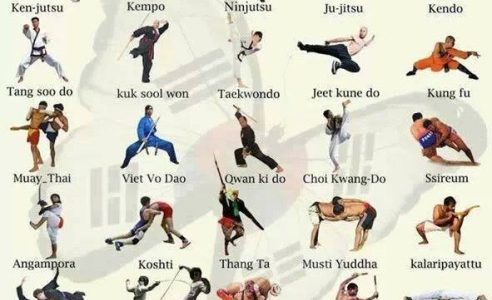Key Differences Between Traditional Martial Arts And Modern Battle Sports: A Comprehensive Evaluation
Key Differences Between Traditional Martial Arts And Modern Battle Sports: A Comprehensive Evaluation
Blog Article
Web Content Writer-Valentine Sexton
When you consider martial arts, do you lean extra towards the typical practices or the modern fight sports? Each path uses distinct benefits and experiences, shaped by their viewpoints and training techniques. Traditional martial arts highlight personal development and technique, while modern-day fight sporting activities focus on competitors and performance. Understanding these distinctions can assist you in picking the best approach for your trip. But just how do these distinctions materialize in training and viewpoint?
The Ideology and Background Behind Conventional Martial arts
While lots of people associate martial arts with physical combat, the approach and history behind standard martial arts run much deeper. Read More At this website 'll locate that these self-controls emphasize personal development, discipline, and regard.
Stemming from ancient practices, traditional martial arts were usually established for Self-Defense and spiritual advancement. They personify principles such as balance, harmony, and self-constraint, guiding specialists beyond plain battling skills.
As you train, you'll not just learn strategies yet also acquire understandings into the society and worths that formed these arts. The routines and customs, often passed down with generations, cultivate a feeling of neighborhood and belonging.
The Affordable Nature of Modern Combat Sports
Modern combat sports have actually changed the landscape of martial arts into an extremely affordable sector, where professional athletes face off in a test of ability, strategy, and endurance.
You'll notice that competitions are usually organized with rigorous rules and laws, ensuring fair game and safety. These events bring in big target markets, sustaining the enjoyment and intensity of competitions.
Professional athletes train carefully, not just for physical expertise yet also for psychological strength, recognizing that every detail counts in the ring. The adrenaline rush during competitors is palpable, as boxers press their limitations to assert success.
Followers appreciate the athleticism and virtuosity involved, making contemporary combat sporting activities a thrilling phenomenon that continues to advance and mesmerize lovers around the world.
Training Techniques and Strategies: A Relative Evaluation
The affordable atmosphere of contemporary battle sporting activities demands cutting-edge training techniques that vary significantly from traditional martial arts.
In modern training, you'll concentrate on specific methods, sparring, and conditioning, commonly utilizing drills that imitate genuine battle situations. You'll see an emphasis on measurable efficiency and frequent competition to assess your abilities.
In contrast, conventional martial arts focus on types, katas, and thoughtful teachings, frequently stressing technique and respect over competitors.
Training is typically much less extreme and might entail recurring practice instead of real-time sparring.
While both strategies construct skill and health and fitness, modern combat sports give an extra dynamic and versatile training setting, preparing you for prompt difficulties in the ring or cage.
Choose the path that aligns with your objectives and interests.
Conclusion
In choosing in between traditional martial arts and modern-day combat sporting activities, it really boils down to what you value the majority of. If you're trying to find personal growth, self-control, and a sense of community, standard arts could be your finest fit. Yet if you grow on competitors and real-time difficulties, modern combat sports could be the method to go. Eventually, martial arts equipment provide distinct benefits, so it's all about aligning your training with your individual goals and interests.
